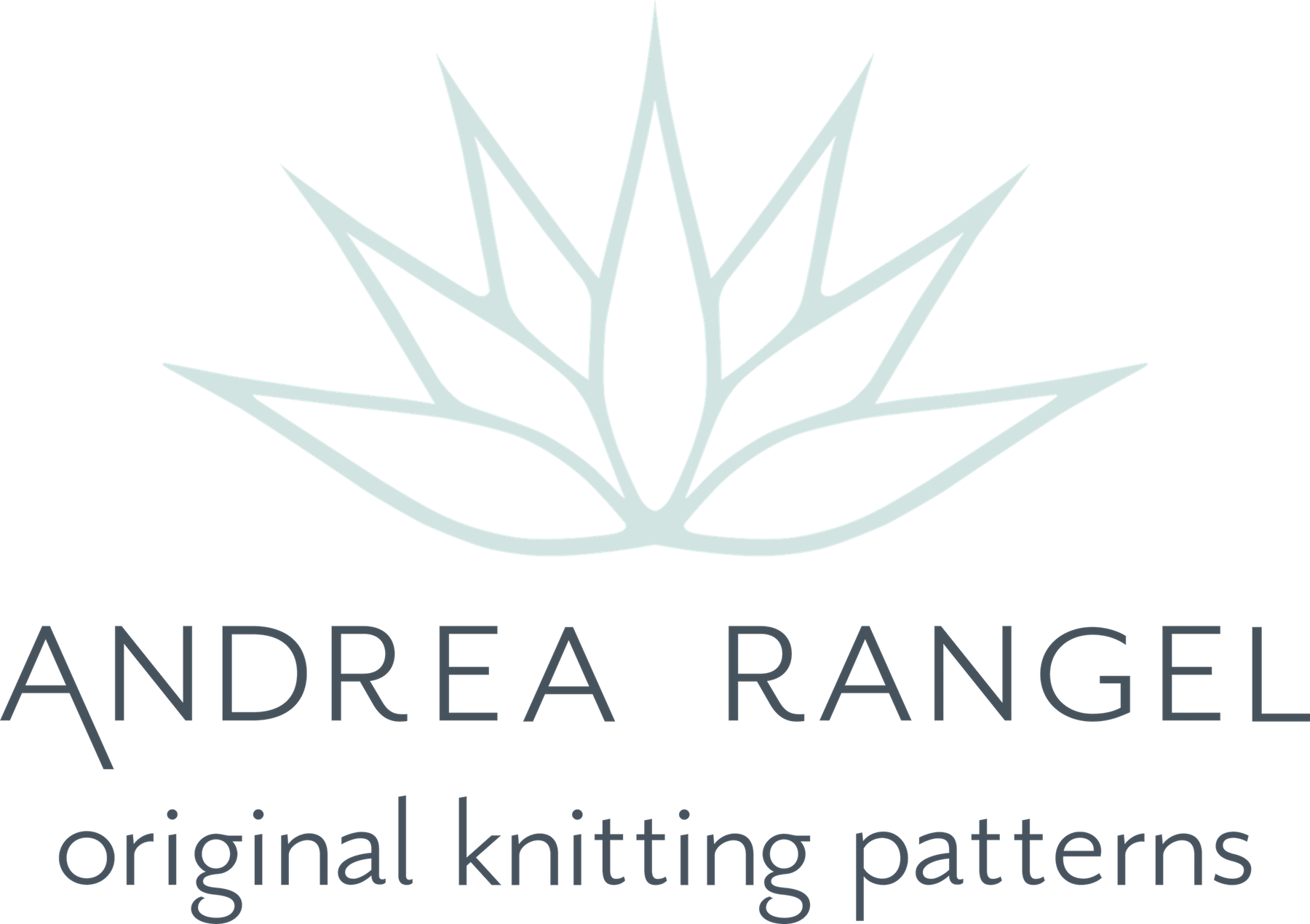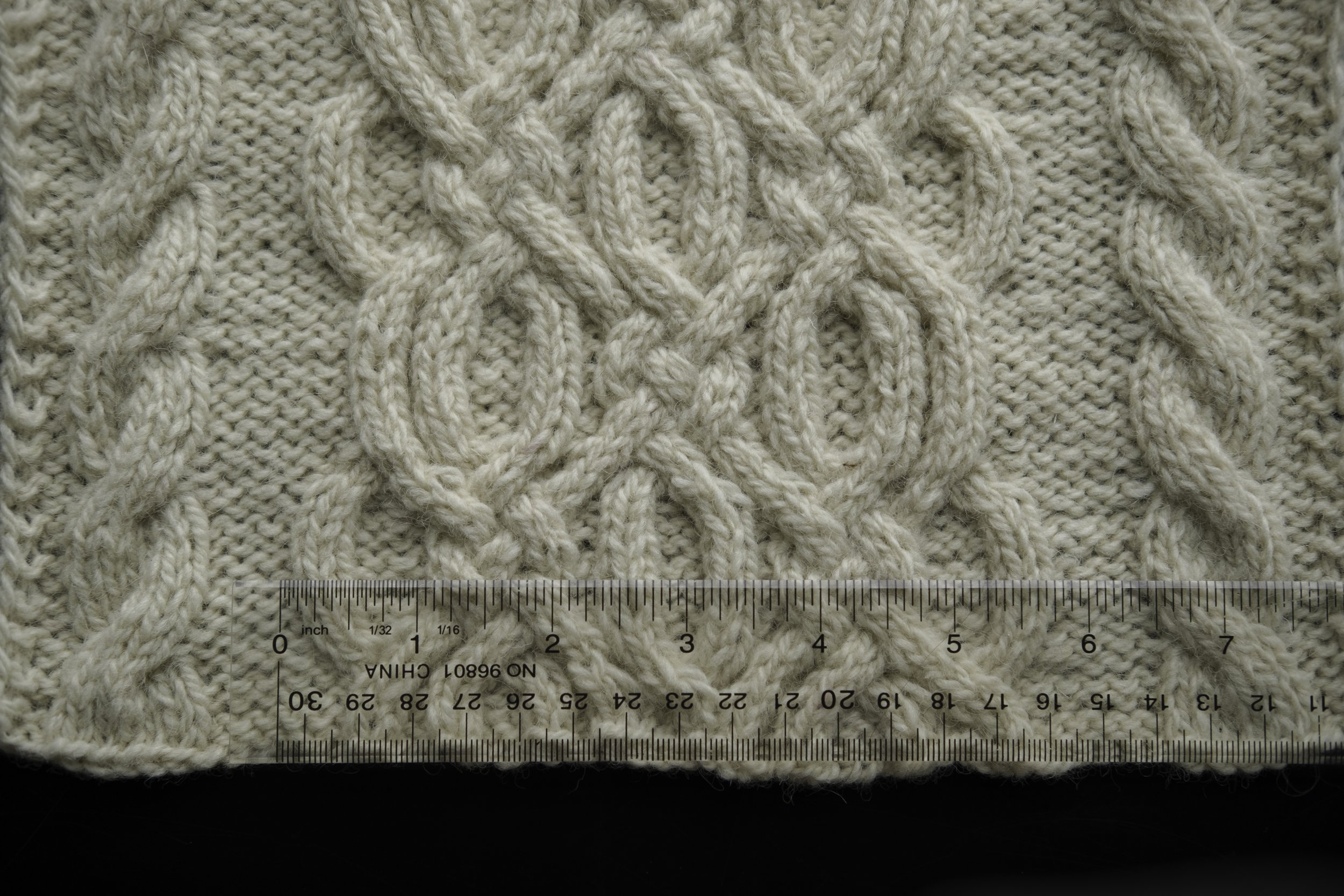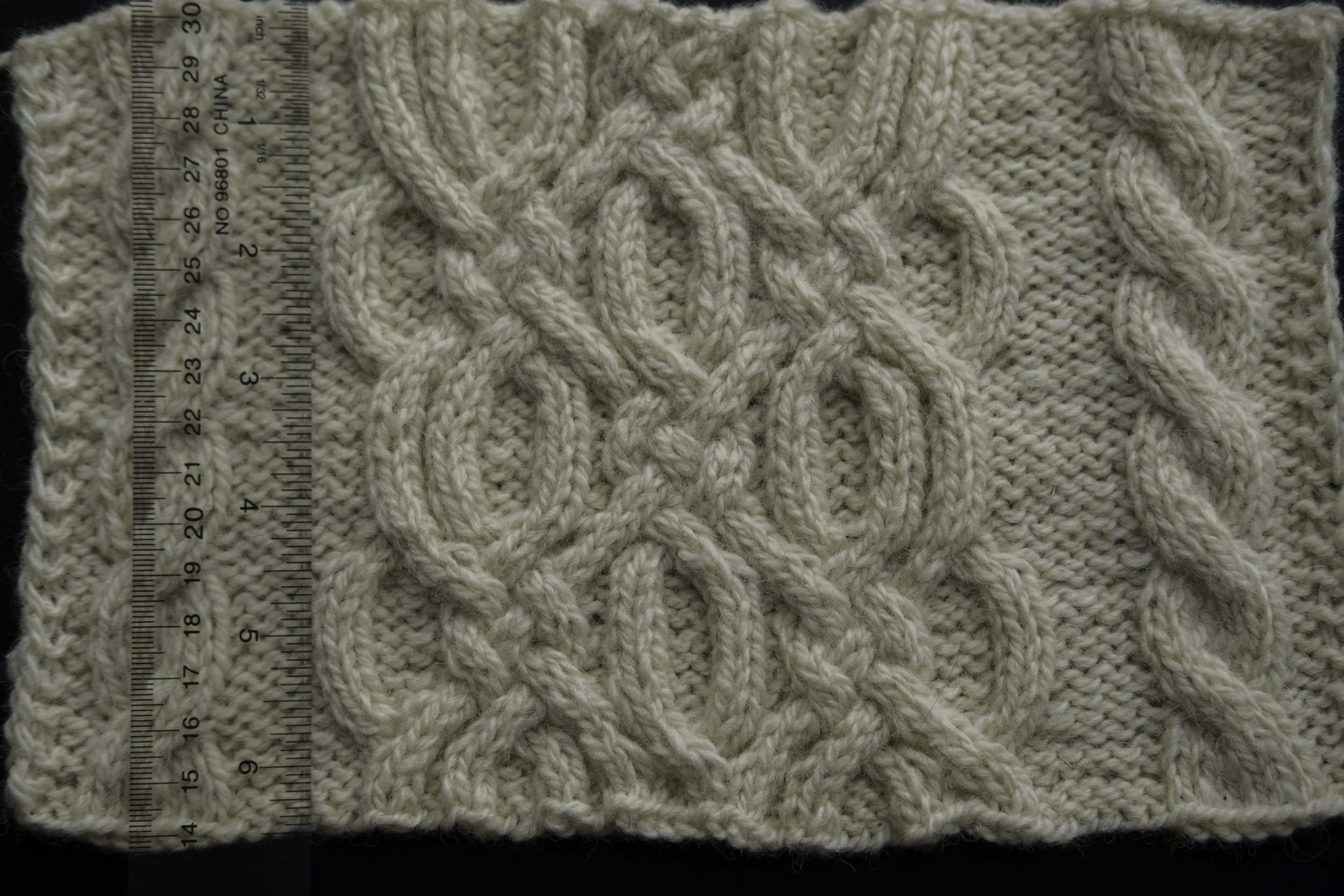Quick Tip: Measuring Gauge on Cables
A knitted cable swatch in off-white with a clear plastic ruler laid over top of it.
I love fancy cable motifs, but it can be tricky to get an accurate gauge measurement if you’re trying to count stitches per inch. Here’s how I measure gauge on cables.
The short version is measure the full width and length of the cable and then divide by the number of stitches and rows rather than trying to count individual stitches. Read on for the longer version with math.
A knitted cable swatch with a plastic ruler over top of the central cable motif. It shows that the width of the motif is about 5.5 inches.
My Favourite Gauge Measuring Tool
I like to use a clear plastic ruler for measuring gauge no matter what kind of fabric it is. It’s stiff and straight so I don’t have to worry it’s being distorted like I would with a measuring tape. I also like that I can see the stitches below. That helps me set it down in just the right place and see the context of what I’m measuring. Having a long ruler lets me gently press down the whole swatch to keep it from shifting around. I’ve tried a variety of fancy gauge measuring tools and I always come back to this one. That’s just to say that different knitters prefer different tools and you can experiment with different kinds to find one that works well for you.
How to Measure
Measuring width or stitches per inch
I really can’t count stitches along a ruler when I’m looking at a cable motif. Instead, I measure across the widest part of the cable motif. I know how many stitches wide my cable motif is, so it’s much easier to do some quick math to find my gauge. In the example above, I measure about 5.75 inches/14.5 cm wide.
(Quick note, I just noticed that my swatch is upside down! Even though I design knitting patterns for a living, I didn’t realize that while taking photos or while editing them, just now as I’m writing this. It doesn’t matter for measuring, but it does really bug me!)
EDIT January 17, 2024
And another note: The previous version of this post had a typo and based the math below on a motif width of 5.5 instead of 5.75, which is what it actually is. I’ve updated the post to fix the math. Sorry about that!
The motif is 40 stitches wide, so a quick calculation will tell me how many stitches I’ve got per inch, per four inches, or per ten centimetres.
40 ÷ 5.75 = 6.95652…
I’m going to round that answer to 7. So I’ll say I’ve got 7 stitches in 1 inch. To find out how many stitches are in four inches, I’ll multiply by 4.
7 x 4 = 28
Since 4 inches converts to approximately ten centimetres, I can say that my gauge is
28 stitches = 4”/10 cm.
If I wanted to do the math in centimetres instead to begin with, I could do that too. That calculation would be:
40 ÷ 14.61 = 2.7378…
Rounded, that’s 2.75 stitches per cm or I can multiply by 10 to get per 10 cm.
2.75 x 10 = 27.5, which I’d round up to 28
So we end up with the same number as when we calculated for inches.
A knitted cable swatch with a clear ruler laid vertically. It shows that the length of the swatch is about 6.5 inches including cast-on and bind-off rows.
Measuring Length or rows per inch
Patterns may not mention row gauge in cables, but might just give row gauge in Stockinette stitch. In the swatch above, I can measure the overall swatch’s row gauge by flipping it over and measuring the Stockinette stitch section. I’d do that by counting the number of rows in 4 inches and I’d do that probably three times in three different spots.
If you’re just measuring the row gauge of a cable motif, you can do it in a similar way as for row gauge. I keep track of how many rows I’ve worked and measure the whole length of the swatch (minus the cast-on and bind-off rows) rather than trying to count rows alongside my ruler.
In this case I worked the whole motif twice, which is 40 rows since the motif is 20 rows tall. The whole length of the swatch is 6.25 inches/16 centimetres. I’ll do my quick calculation again to get the rows per inch.
40 ÷ 6.25 = 6.4
I’ll round that to 6.5. Again, to get the rows per four inches or ten centimetres, I’ll multiply by 4.
6.5 x 4 = 26
So my gauge is:
26 rows = 4”/10 cm
Here are my calculations in centimetres:
40 ÷ 16 = 2.5
2.5 x 10 = 25
Because of rounding, I didn’t come up with exactly the same number — 25 instead of 26. You can decide for yourself how exact to be, but I wanted to point that out because you should know that there can always be small discrepancies when converting between metric and imperial. In this case, it’s a quarter of a stitch difference, which is acceptable to me for planning with this fabric.
How Cable Gauge is Talked About in Patterns
If I’m trying to knit a richly-cabled fabric, I like patterns that include the width of the main cable motif in the gauge section. Most of the time they won’t include the length, but will include a Stockinette stitch gauge for length. You can look for patterns that include this info in the pattern listing to help you choose a pattern that is more likely to be high quality.
This cable motif is from the brilliant and useful book by Norah Gaughan, Knitted Cable Sourcebook.






